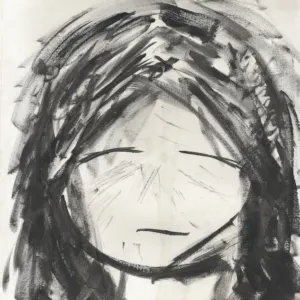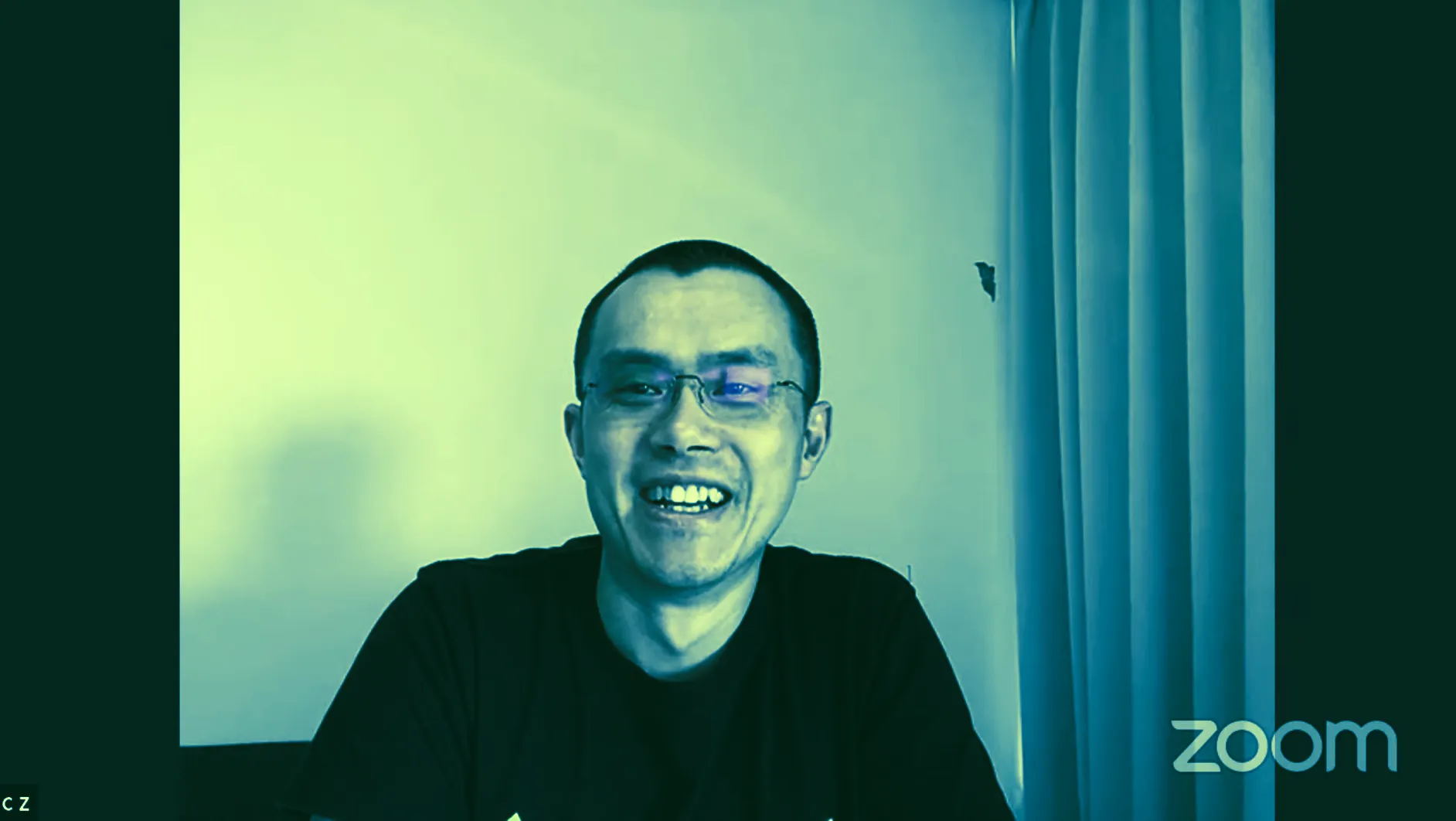We do the research, you get the alpha!
It didn’t take long for Changpeng “CZ” Zhao to emerge as DeFi’s newest and probably most powerful cheerleader. As the founder of Binance, one of the largest centralized crypto exchange in the world, CZ’s burgeoning enthusiasm toward DeFi—especially his admission that decentralized exchanges(DEX) will overtake his own centralized exchange—reveals not only his own DeFi obsession, but also his plan to build a DeFi-empire, all within Binance.
For this week’s da bing, I Google-hungout with CZ on China’s mid-autumn festival, in a mixture of Chinese (which we both speak natively, despite his having a stronger Southern accent whereas mine a distinct Beijing one) and English (which we resorted to for certain aspects of DeFi.)
We talked extensively about how DeFi will disrupt the current status quo, whether Binance is on a trajectory to be decentralized, and what the future looks like.
The “a-ha” moment
CZ was never known as a DeFi guy. In fact, despite an earlier experiment launching Binance DEX on Binance Chain, the company was mostly an observer of the DeFi space. That all changed on August 31 when it unveiled a sister chain, Binance Smart Chain (BSC), a100% Ethereum compatible.
Since then, we’ve seen a host of Ethereum DeFi copycats springing on BSC.
But according to CZ, DeFi has been on his mind ever since he had an “a-ha” moment: “The ‘aha moment’ occurred when I understood the power of Automated Market Making (AMM) for stablecoins,” he told me. “Last year, I could not have imagined that stablecoin trading would be a thing, because it’s counterintuitive.” But once he understood the concept of behind Curve, that changed. Curve, like many DeFi projects, uses an algorithmic approach for price discovery without an order-book commonly used by centralized exchanges. It minimizes manipulation and offers lower slippages.
Despite being a fan of the AMM concept, CZ says that he is not a diligent DeFi farmer, let alone a degen. “I don’t personally use DeFi products that much. I tried them to understand the workflow,” he said.
Binance selects DeFi projects based on hardcore data such as number of users. It’s no wonder that most DeFi projects on Binance Smart Chain are straightforward forks of Ethereum’s DeFi products such as Uniswap, Compound, Curve and Balancer.
Simple copycats can look half-baked, as I have pointed out, for these new food tokens simply suck liquidity in the beginning and then tend to suffer from a bloody mass exodus. None of the BSC DeFi projects are listed among the top DeFi projects based on Total Value Locked ranking.
But is that a problem?
“Most of the coins will die in two weeks,” CZ said. “We are looking at projects that have long-lasting value.” He explained that by “ long-lasting value,” he was referring to projects that serve the masses and solve real business problems rather than coins serving simply as rebates and rewards for whales and super-sophisticated users.
That attitude of always being experimental pervades our conversation. The idea that decentralized exchanges will inevitably overtake centralized exchanges one day, and that the team has to “throw experiments” (as we say in Chinese) to get into the game, propelled Binance to launch Binance Chain in 2019, and BSC this year.
“I hate running a centralized exchange.”
Our call was supposed to be half an hour, but CZ extended it to almost an hour as this interview was his last call of the day. He is a very chatty guy, amiable, laughs a lot and often admits “I don’t know” in an endearing way. As is usual with him, he did not say where in the world he was at the moment, since crypto is supposed to be decentralized and physical location is inconsequential.
As most of CZ’s followers know, he’s been interested in converting the company to a decentralized exchange for a long time. “DEX is so much easier to run,” CZ told me. “You don’t have to KYC, don’t need to have a big compliance team or a big lawyer team. All you need is a team of developers, and that can even be community-contributed.”
For CZ, another great byproduct of moving to a decentralized exchange could be the fact that no one will complain on Crypto Twitter and blame Binance for listing certain coins. Nor will Binance hold users’ keys and suffer from the anxiety and fear of losing them. “There is no ‘running,’ just developing and deploying it,” he said.
Yet, despite his growing love for DeFi, CZ doesn’t think DeFi will flip CeFi anytime soon. “If you look longer term, 15 years or 20 years, for sure, DeFi will take over CeFi. But it’s not going to happen anytime soon, like in the next 12 months.”
Particularly, he looks at the Total Value Locked in DeFi, which is a tiny fraction of CeFi. Moreover, the number of users in DeFi is way smaller than that of CeFi. “Most DeFi users are big whales and players,” he lamented.
CEX appeal
At the end of the day, CZ is putting two eggs in two baskets. His centralized exchange basket is responsible for serving existing clients and making profits, while his DeFi basket is responsible for luring devs to build DeFi products.
“CEX makes good money, but developing a blockchain doesn’t generate a lot of money,” CZ said.
The centralized exchange will continue to survive because most users dislike using DeFi wallets and still prefer to relinquish their keys in the name of convenience. More importantly, who will onramp all that fiat to crypto if centralized exchanges don’t facilitate the transactions?

Yet, over time, the role of the centralized exchange will gradually diminish as innovative solutions such as AMM lure users from CEX to DEX. innovations among decentralized exchanges will provide real benefits such as liquidity mining and low slippage—all manner of things that are inaccessible to centralized exchanges. That’s why CZ is putting eggs in the DeFi basket.
“We are one of the few centralized exchanges that don’t view CEX as our main business, even though it’s generating decent profits to fund our growth. But we don’t view it as our core business. We view it as a temporary stepping stone to get to the full decentralized world,” he said.
It sounds like Elon Musk’s plan where he initially sells expensive luxury electric sports cars to fund the development of affordable electric vehicles.
Is BSC a blockchain or a DeFi Studio?
Binance’s DeFi empire centers around its Binance Smart Chain (BSC), an alternative to Ethereum, which is notorious for its congestion issues. But just like most public blockchains that struggle to find their own niche, BSC needs to find its people. What differentiates Ethereum is the group of dedicated developers and contributors who are willing to “throw” DeFi projects, one after another.
To attract developers to the BSC ecosystem, Binance provides a suite of offerings including its Launchpad, Launchpool and $100 million grant program. It even launched an Innovation Zone dedicated to the trading of risker coins. CZ described these things as being similar to Ethereum Foundation’s grants, but to me they look more like an incubation studio. In fact, it all sounds awfully similar to the approach taken by another large, centralized exchange: Huobi.
How so? Rather than simply giving out grants, Binance is deeply involved in the DeFi projects it selects. “We engage with the community deeply. We talk to different teams there. We don’t just convince them to switch. We advise them on token models. We also have a technical team that gives advice,” CZ told me.
It makes one wonder whether Binance is simply a studio that churns out DeFi projects, rather than an Ethereum-like ecosystem that attracts good projects, without trying.
And when the boundaries of whether a project is a Binance project become blurry, the source of incentive becomes questionable. Among the successful BSC projects, how much stake does Binance have in them, and how does Binance judge which project gets more funding?
A bubble about to burst
CZ believes that the DeFi space is experiencing a bubblish period and the craze will die down as bubble bursts. However, one cannot stop wondering if Binance is contributing to the bubble and whether the de-bubbling of DeFi will hurt Binance, too.
Regardless, the real question is, as DEX trading volumes skyrocket, will Binance need another experiment to claim its slice of the DeFi pie, or will its Binance Smart Chain harvest enough non-Ethereum yields to establish itself as a significant player in the DeFi ecosystem.
Binance Smart Chain is basically a two-sided marketplace. On the one hand, it needs to attract devs to build real innovative products on the chain. On the other hand, it needs to attract investors to use these products. So far, Binance has gathered an ecosystem of users, as can be seen from a growing number of unique addresses. Retail investors are only too happy to jump on any bandwagon that CZ tweets.
But the other side of the marketplace is the trickier one, as can be seen from the flattening daily transaction data. Why would devs switch to Binance Smart Chain when Ethereum still dominates? Despite Ethereum’s notoriously clogged network, why would devs choose a blockchain maintained by a centralized exchange, rather than any other blockchain?
To win dev’s loyalty, Binance needs to be all in for the long game. After all, Ethereum emerged as DeFi’s Promised Land only after years of low-key, quiet experimentation. Growth won’t happen overnight, even if it’s cheered on by CZ.
Do you know?
Binance’s Chinese name is 币安, 币 means crypto, and 安 means safety.





